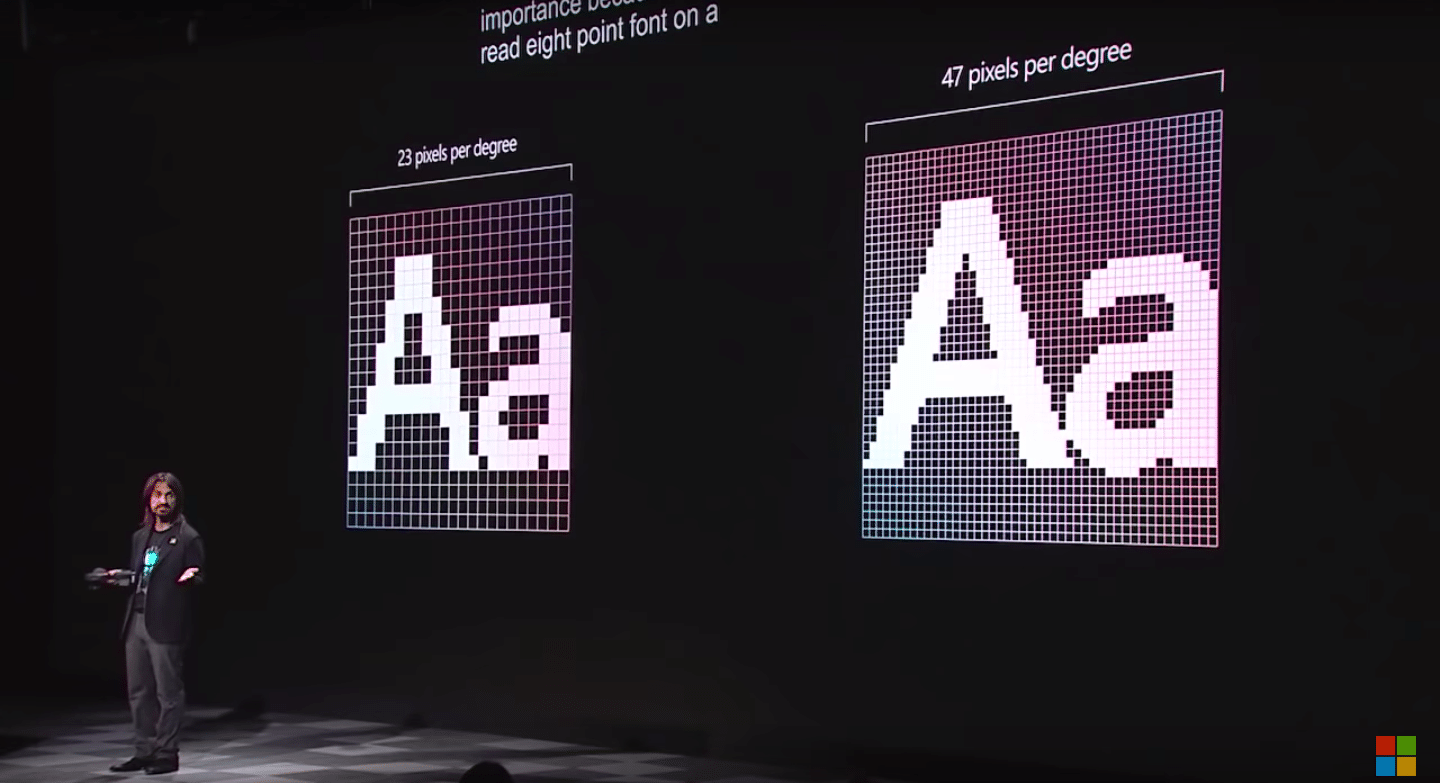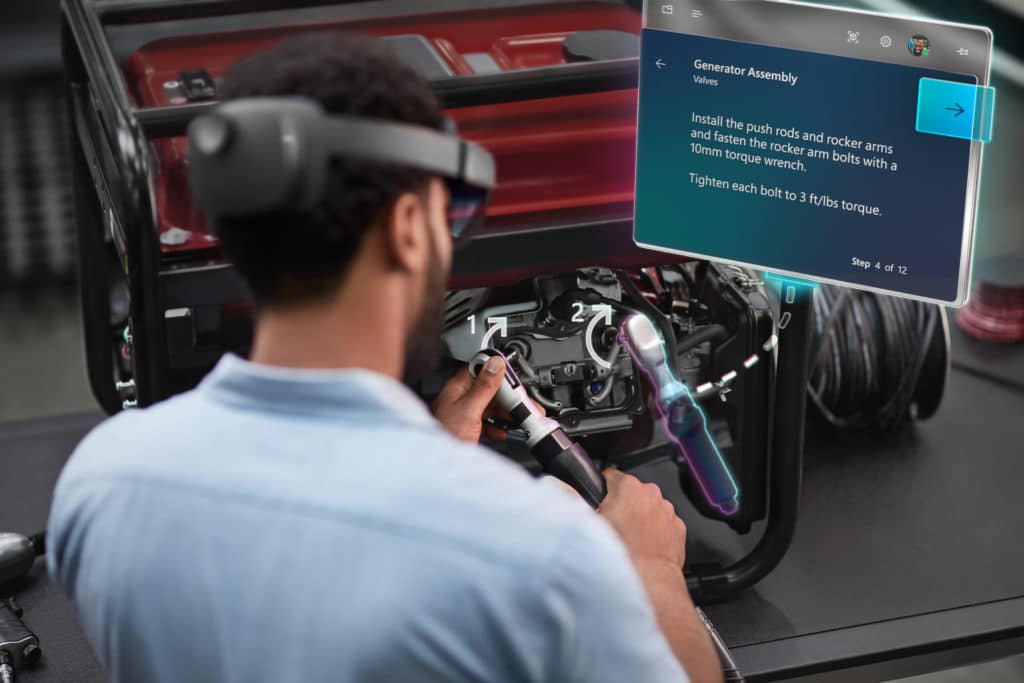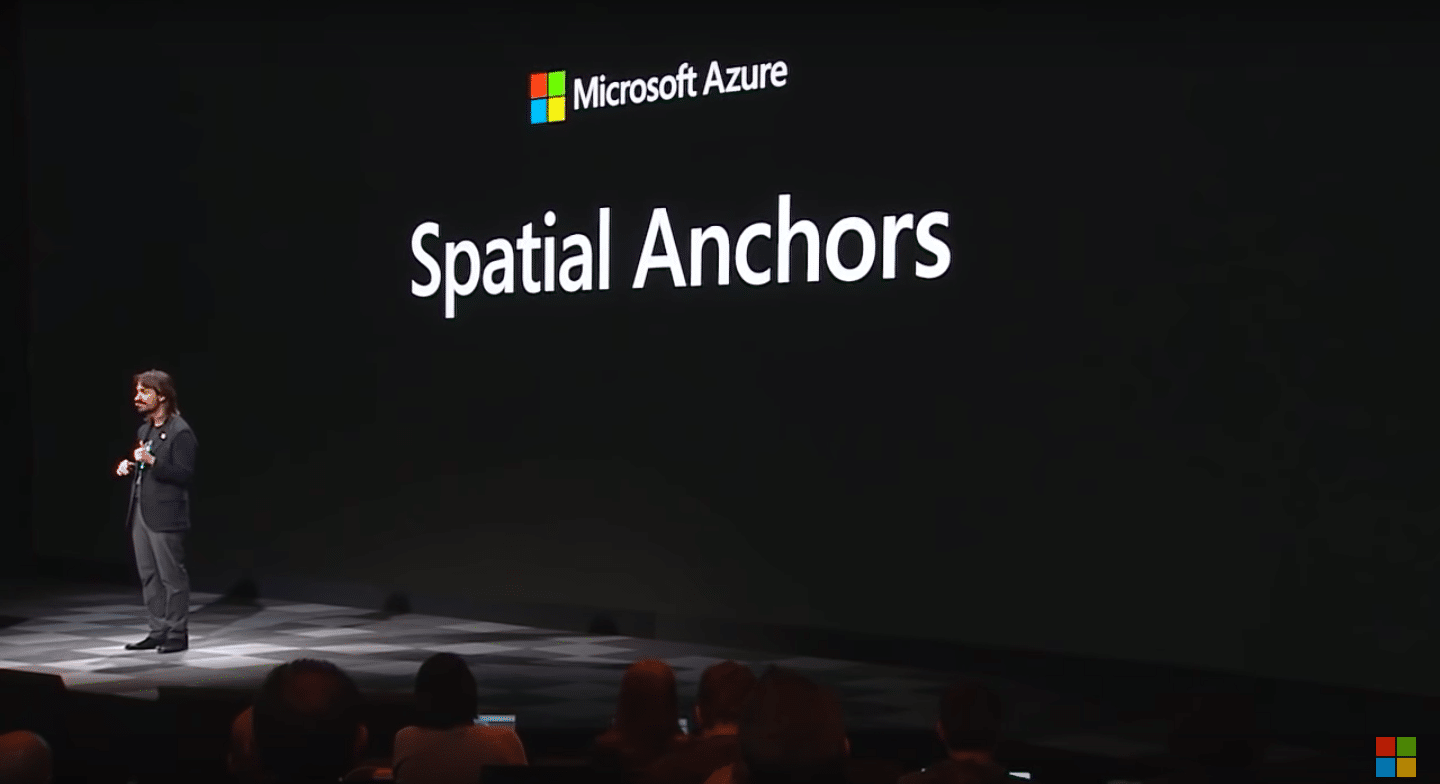
XR Talks is a series that features the best presentations and educational videos from the XR universe. It includes embedded video, as well as narrative analysis and top takeaways. Speakers’ opinions are their own.
By now, you’ve likely read ample news on Hololens 2, including specs and launch event coverage. And there has been solid coverage and reviews so far (we recommend Cnet’s review). But we’ll now take a deep dive on the strategic implications for this week’s XR talk (videos below).
First, what were the launch highlights? We learned a bit more about Hololens history and evolution as a descendant of Microsoft Kinect. With ancestry that threads through the 2016 Hololens, we’re now at the point of evolution with significant upgrades and new device positioning from Microsoft.
“In 2010, Kinect transformed the way we played by turning voice and movement into magic,” said Hololens Lead and Microsoft technical fellow Alex Kipman. “The experience of reaching out into space to play made us realize how confining it was to live life through flat dimensional screens.”

As for the current state of that evolution, Hololens 2’s feature set was largely driven by user feedback in three main areas: greater immersion, more comfort and more immediate value out of the box. The first point is where the top spec upgrades come in: resolution and field of view.
This has been the biggest talking point so far, including a 2x bump in field of view, while maintaining the magic number of 47 pixels per-degree of sight. That involves lots of optical science, but the practical translation is being able to read 8-point font on projected images.
“To put it into perspective and to highlight the generational leap, this is the equivalent of moving from a 720P television to a 2K television for each of your eyes,” said Kipman. Beyond resolution, the field of view increase can best be visualized using the graphic below, care of UploadVR.

Microsoft is also advancing Hololens apps. It previously released Layouts and Remote Assist for enterprise “see what I see” support. That’s now joined by Dynamics 365 Guides for AR guidance around industrial equipment. This counteracts enterprises’ loss of institutional knowledge.
“Now business processes and workplace wisdom can be preserved. It will help them by placing step-by-step instructions right where the work is happening,” said Kipman. This is a growing enterprise AR adoption driver as institutional knowledge is lost from retirement and turnover.
Lastly, and most importantly, Hololens 2 has deeper integration with Azure. The latter constitutes Microsoft’s AR cloud, which it calls the “Internet of Holograms.” It enables spatially anchored graphics for enterprises and offloads their heavy computational needs to the cloud and edge.
“This will enable the birth of the Internet of Holograms,” said Kipman of the Hololens 2 integration with Azure, “A world where holograms can be shared with others across different devices and form factors; A world where every device becomes a lens into our connected mixed reality.”

Panning back to strategic implications, this deeper integration with Azure is the non-sexy but important part that vaults Microsoft’s already-leading position in Enterprise AR. We can compare device specs with Magic Leap One, but Microsoft wins in enterprise footing and cloud coverage.
Just like Magic Leap’s AR Cloud (the Magicverse) Microsoft’s enterprise AR cloud (the Internet of Holograms) will be its eventual point of greatest value. In both cases, the true differentiators or “moats” for these companies will be their respective AR clouds, more-so than the gadgetry.
And while Magic Leap, and eventually Apple, chase the larger consumer market, Microsoft has placed its chips on the enterprise. This isn’t surprising given that its DNA is very much tied to enterprise software and computing. That comes with a certain set of competencies, like security.
Panning back even further, Microsoft is pursuing many paths to spatial computing. It’s vertically integrated by owning the hardware (Hololens), OS (Windows), application layer (WMR), first-party apps (Remote Assist, Layout, Guides) and enterprise cloud (Azure). That’s a powerful stack.

At the same time, it’s pursuing the traditional Microsoft model that licenses WMR software to third-party VR hardware makers (just like Windows-based PCs). That misses out on quality control and product design of vertical integration, but has economic advantages in margins and scale.
Altogether, Microsoft is in a position to own the technology stack, accelerate enterprise AR market penetration, and enjoy high-margin software licensing revenues in VR. This could place it in an advantageous position among tech giants pursuing the spatial computing spectrum.
See below for footage of this week’s Hololens 2 keynote. We’ve provided long and short versions. The long version is the full ride, while the short version is a highlight reel put together by the good folks at Engaget. Stay tuned for lots more analysis as Hololens 2 is released into the wild.
As always with keynotes, fair warning about overly promotional and scripted rhetoric. The products have importance if you squint past the Kool-aid fueled delivery. Also remember to view AR demos with appropriate salt tonnage. Microsoft’s on-stage demos do not apply Hololens’ field of view.
Short Version
Long Version
For deeper XR data and intelligence, join ARtillery PRO and subscribe to the free AR Insider Weekly newsletter.
Disclosure: AR Insider has no financial stake in the companies mentioned in this post, nor received payment for its production. Disclosure and ethics policy can be seen here.
Header image credit: Microsoft
